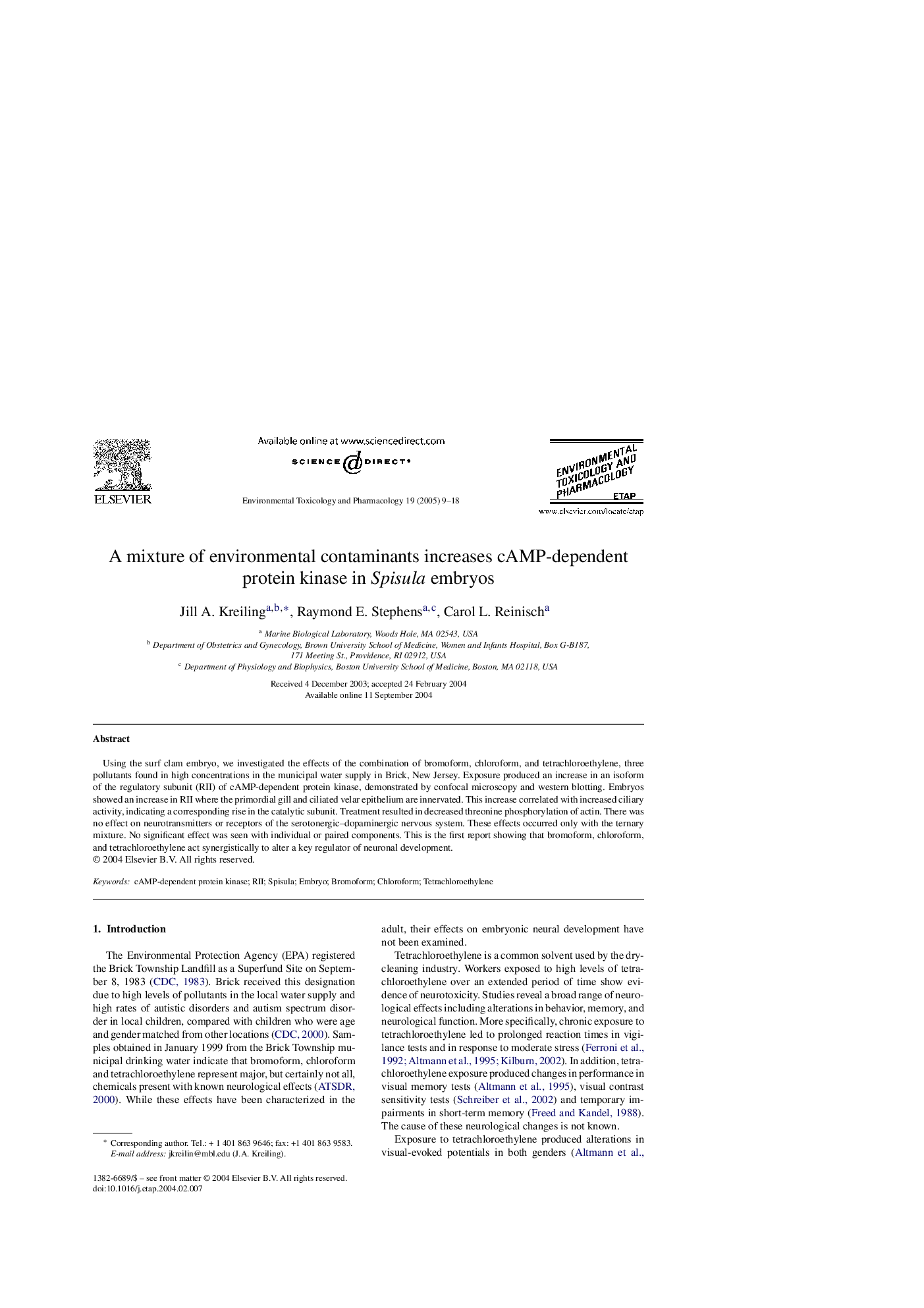| Article ID | Journal | Published Year | Pages | File Type |
|---|---|---|---|---|
| 9030306 | Environmental Toxicology and Pharmacology | 2005 | 10 Pages |
Abstract
Using the surf clam embryo, we investigated the effects of the combination of bromoform, chloroform, and tetrachloroethylene, three pollutants found in high concentrations in the municipal water supply in Brick, New Jersey. Exposure produced an increase in an isoform of the regulatory subunit (RII) of cAMP-dependent protein kinase, demonstrated by confocal microscopy and western blotting. Embryos showed an increase in RII where the primordial gill and ciliated velar epithelium are innervated. This increase correlated with increased ciliary activity, indicating a corresponding rise in the catalytic subunit. Treatment resulted in decreased threonine phosphorylation of actin. There was no effect on neurotransmitters or receptors of the serotonergic-dopaminergic nervous system. These effects occurred only with the ternary mixture. No significant effect was seen with individual or paired components. This is the first report showing that bromoform, chloroform, and tetrachloroethylene act synergistically to alter a key regulator of neuronal development.
Related Topics
Life Sciences
Environmental Science
Health, Toxicology and Mutagenesis
Authors
Jill A. Kreiling, Raymond E. Stephens, Carol L. Reinisch,
